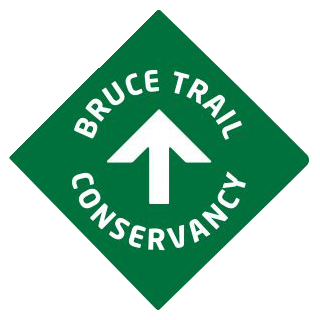Niagara's Most Unwanted #4: Japanese Stiltgrass
Japanese Stiltgrass (Microstegium vimineum) is regulated as a pest in Canada and a newcomer to our country as an invasive species. Native to southeastern Asia, it arrived in North America in the 1900s when used as packing material. Since then, Japanese Stiltgrass has proliferated across large swaths of the United States: along the eastern seaboard from New York to Florida, as well as to the west as far as Illinois and Texas.
The first population of Japanese Stiltgrass was confirmed in southern Ontario in 2019. Although discouraging, it does present an opportunity for us to contain this noxious weed early, before it spreads.
Japanese Stiltgrass grows in dense stands that outcompete native species. It is a shade-tolerant, sprawling grass, that can quickly dominate many habitats, including forests, wetlands, fields, lawns, trails, ditches, and stream banks.
What to look for
- An annual, sprawling grass, up to 1.1 m in height
- Pale green leaves, about 7 cm long and wider in the middle, with a distinctive silver stripe midrib
- Leaves turn purple in the fall
Japanese Stiltgrass bears some resemblance to North American native white cutgrass, but can be distinguished by its hairless nodes and smaller leaf blades, as well as its telltale, shiny midrib blade.
Impact
Similar to Garlic Mustard and many other invasive species, Japanese Stiltgrass has a significant deleterious effect on local biodiversity and regeneration of native plants. Mowing, grazing, or burning creating land disturbances that allows Japanese Stiltgrass to invade a given area, can enable it to dominate the plant community within several years. It is a prohibited species under the federal Plant Protection Act.
Japanese Stiltgrass also produces seeds in copious amounts, which can persist and remain viable in the soil for as long as five years. The seeds readily attach to clothing, animal fur, and footwear, and can be spread long distances by hikers or their pets.
Control
To halt its establishment in Canada, preventing the spread of Japanese Stiltgrass seeds is key to control of this pest. Hikers can avoid unintentionally dispersing seeds to new areas by cleaning their boots, clothing and pets after each outing to remove any hitchhiking seeds.
To this end, by mid-May, a new Boot Brush Station is expected to be installed at Effingham Road across from Short Hills. All hikers are greatly encouraged to use the Boot Brush Station.
It is also recommended, before and after travelling abroad to hike, to carefully clean hiking footwear and other gear to avoid inadvertently transferring invasive species across international borders.
Help for Landowners
Landowners along the Bruce Trail may be concerned about invasive species such as Japanese Stiltgrass. The Bruce Trail Conservancy (BTC) has a small team of staff ecologists well-versed in local invasive species and forest ecosystems, and offers a Landowner Stewardship Program to aid Trail landowners. Upon request, Conservancy staff will provide expert advice on invasive species and their control. If you need this support, please contact the BTC's Landowner Stewardship Coordinator at 905-529-6821 ext. 232 or landownerstewardship@brucetrail.org.
Pull Party!
Are you interested in joining future “Pull Parties” of like-minded Niagara BTC members who would like to give back to the Trail and our Landowners by helping to control invasive species in Niagara? Any interested members should send an email to aliciaaitchison1@gmail.com for more information.
Resources
This article drew upon Canada Food Inspection Agency information at: https://inspection.canada.ca/eng/1297964599443/1297965645317, Ontario Invasive Plants Council information at: https://www.ontarioinvasiveplants.ca/ and the expertise of Bruce Trail Conservancy ecologists.
As well, check out:
- EDDMapS Ontario (for tracking invasive species): https://www.eddmaps.org/ontario/
- Invasive Species Centre: https://www.invasivespeciescentre.ca/



